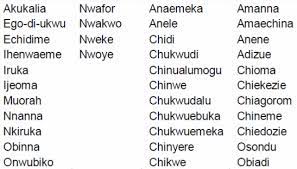The Culture And Tradition Of The Tiv People Of Benue State, Nigeria
What do you know about Tiv tribe history and origin? Where the tribe came from, and who are their ancestors? In this article we are going to tell you some known historical facts about this ethnic nation of West Africa.

The Tiv people are one of the minority ethnic groups in Nigeria numbering nearly six million individuals residing in the middle belt States of Benue, Taraba, Nasarawa and Plateau. Tiv populations are also found in Cross River and Adamawa States and in the central African country of Cameroon. In pre-colonial Nigeria, the Hausa ethnic group of northern Nigeria referred to the Tiv as “Munchi”, This is a term the Tiv people considered very derogatory.
The Tiv people own rich agricultural lands and as a result, they have an active farming population who depends on agricultural produce for lifestyle and commerce.
See Also: 5 Ways To Promote Peace in Nigeria
Tiv BRIEF HISTORY
According to tradition of Tiv origin, those people came to their current location (Benue River in Nigeria) from the southeast. Official history recorded that the Tiv tribe had their first contact with Europeans in 1907.
The Tiv tribe has a story of their first ancestor, a man known as Takuruku, Gbe, Shon, Awanje, and Karagbe. Tiv people believe that he is their founding father. The ancestor gave birth to two children Ichongoa and Ipusu. Ichongo gave birth to Ikyura, Gondo, Nongo, Mase, Ihar, and Turan, while Ipusu gave birth to Kum, Kpar, Shitire.
Tiv RELIGIOUS BELIEFS
Tiv religious thought is hinged on three basic concepts: Aondo, Tsav and Akombo. These concepts work together for stability, harmony and communal well-being. Aondo lived near the earth but was forced to retreat into the skies after he was struck by a woman pounding food.
Aondo is therefore considered to be the hand of God in the physical setting as in rain (Aondongu noon), thunder (Aondongukumen) lightning (Aondongunyiar) and sun light (Aondo ta yange).
See Also: Top 10 Nigerian National Symbols and Their Meaning
Tsav is a reference to a cosmic potency internalized in man as part of his personality which manifests in people in different forms. In some people, it appears like the crown of a cock and covers the heart of the individual with claws.
In others, it is dwarf like with no claws (Kpum utsa) while in other people, it is a small point projection from the heart which gives the possessor some awareness of the supernatural called ‘Ishima Nomsoor’ (a man’s heart).
Those who possess Tsav are called Mbatsav (singular, Ormbatsav) and their activities are theoretically geared towards good governance (tar soron), personal comfort, security and communal well-being.
Tiv FUNERAL RITES
According to Tiv oral history, the life of every human being in the visible world has an end. Ku (death) is the gateway to enter the invisible world of spirits and ancestors. There is Ku dedoo (good death) and Ku ubo (bad death); however, the only people that gets full funeral rites are the ones that experience Ku dedoo.
Funeral rites begin with an advance message to Takuruku (great ancestor of Tiv people) using musical instruments called Idyer or Ilu. The great ancestor is usually informed of the death by an informant, (BebaTaVer), who emphasizes the need to Takuruku to wait and receive the dead person into the ancestral world.
On the day of burial, the body of the deceased is washed by elderly women to enable the person to get into the spirit world neatly and well dressed. The body is then covered with traditional cloths and under normal circumstances, the corpse would not stay more than twenty-four hours.
In every traditional burial of the Tiv people there is always a discussion on the cause of death called Ku orun.
Tiv MUSIC
- Kakaki: This is an instrument used to convey specials messages to the community such as the announcement of royal births, deaths or marriages. The sound of the Kakaki also serves as a warning/alert of any imminent threat or attack on the community.
- Ilyu: A light wooden instrument used to pass invitational messages for a particular meeting of the elders at the King’s palace or a gathering at the market square for a message from or by the King. It is now used as an instrument to indicate the death of someone.
- Indyer: A heavy wooden instrument carved out of mahogany trunk used especially during festivals of masquerades or yam festivals accompanied with music to deliver messages for the ceremonies or celebration of good harvest for the year.
- Gbande: Agbande (plural), a set of wooden crafted drums used to communicate upcoming festivals or royal occasions such as coronation and funeral. They are particularly large drums played by the young men of the community typically used to complement other musical instruments.
- Akya: It is used together with Agbande at festivals for theatrical displays of the Tiv culture.
- Adiguve: Similar to the violin, the Adiguve is used in conjunction with Agbande at festivals and dance occasions. However, played solemnly, it is used to announce the death of a leader or an elder in the community.
- Ortindin: The Ortindin is a messenger usually chosen by the elders of the community to run errands for the community.
We Believe This Article Was Helpful, Don’t Hesitate To Share This Information With Your Friends On Facebook, Twitter, Whatsapp and Google plus.
Copyright Warning: Contents on this website may not be republished, reproduced, redistributed either in whole or in part without due permission or acknowledgement. All contents are protected by DMCA.
The content on this site is posted with good intentions. If you own this content & believe your copyright was violated or infringed, make sure you contact us via This Means to file a complaint & actions will be taken immediately.



